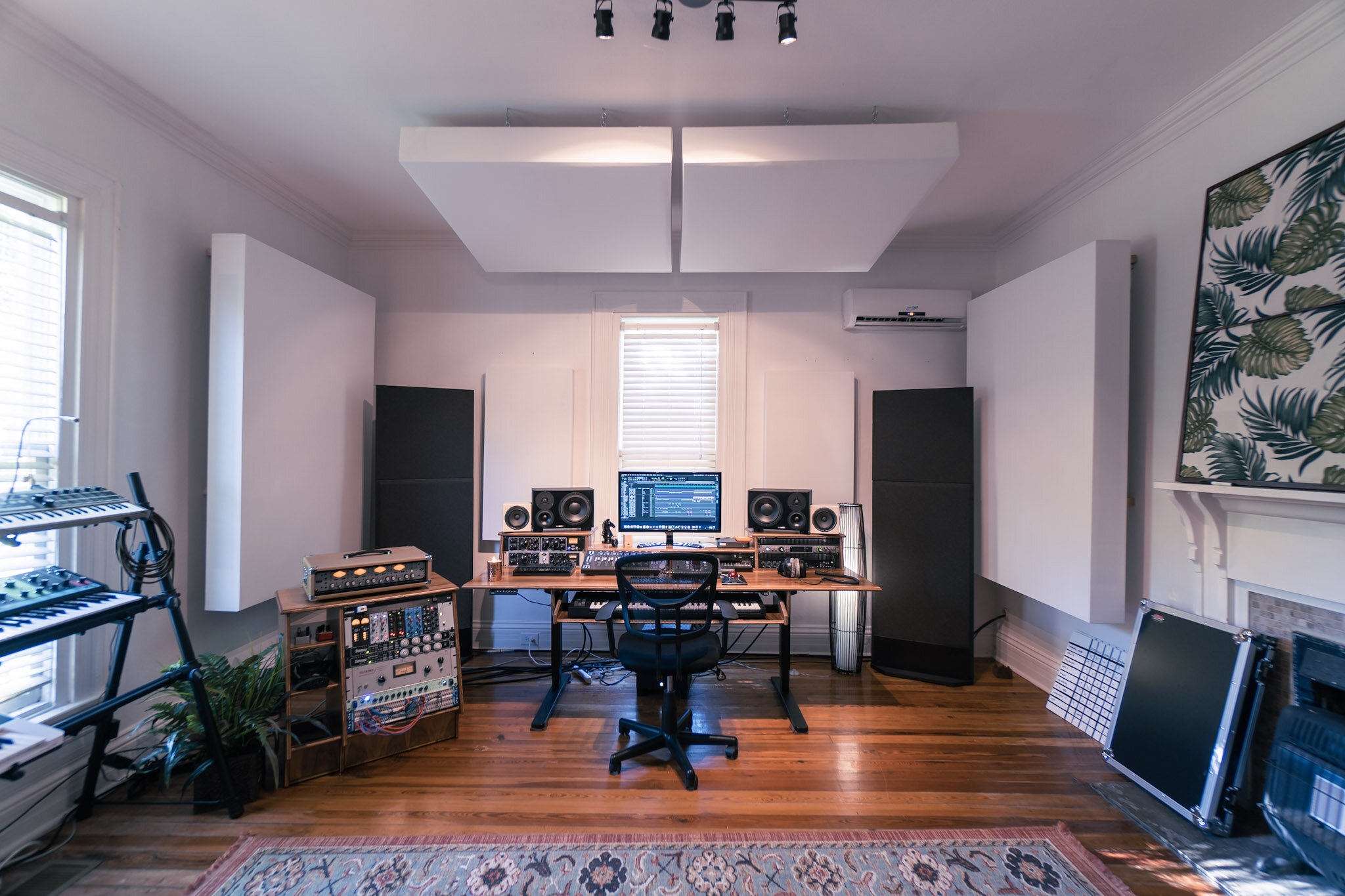Client Spotlight: Thomas Toner – Stone Baby Sounds
Scenario:
When Producer/Mixer Thomas Toner rented a vibey 100-year-old house in Franklin, Tennessee to turn into his private studio, Music City Acoustics was excited to get the call to partner on the acoustical solution. The studio had two tracking rooms and a control room, and MCA initially consulted and built acoustic treatments for both. For this specific scenario, the focus is on the control work project, as many readers might want insight into how to acoustically treat their control rooms within home studio spaces.
The challenge
What happens when you take a 15’3” wide by 15’4” long by 9’10” tall room in a 100-year-old house and try to put a control room in it? Room modes are what happens. More specifically, converging or adjacent room modes which amplify all of the acoustic issues.
Before Thomas reached out to Music City Acoustics to consult on his new control room, he had set up his gear in the new space along with existing acoustic treatments he already had. What he heard when first listening back to the speakers was a very inconsistent low end with a lot of “boominess” and a lack of definition and clarity. Most noticeable, however, was the ringing at 110Hz anytime a kick drum hit or low note was played on an instrument. Right around 110Hz, the room rings when instruments are played, making that frequency and those around it last noticeably longer in the room. When you want to be able to accurately hear your speakers, the last thing you want is to hear your room singing along.
There were two main challenges with this project:
The room had two doors, a large fireplace, and windows on two of the walls, making it a challenge to place bass traps and acoustic panels in several locations.
Treating low frequencies and room modes requires a lot of space and large acoustic treatments that aren’t cheap. The goal here was to keep the new acoustic treatments around $1,000 and utilize the acoustic treatments Thomas already had. The challenge with that was, his existing acoustic panels were only one to two inches deep, nowhere near deep enough to make an impact below 200Hz.
Solution: Our approach to improving this home studio’s woes was two-fold:
Test out different speaker and listening position locations. You might think in a room that is nearly a perfect square it doesn’t matter what wall you set your desk on, but that isn’t always the case, nor was it the case for Thomas. Just by rotating the desk 90° and moving it to the adjacent wall, there was a huge 70% reduction to the modal ringing at 110Hz.
From the onsite measurements MCA took, as well as the room mode analysis done after, we could see that the low-frequency issues in this home studio were the result of a perfect storm. The front-to-back axial mode, left-to-right axial mode, and floor-to-ceiling axial modes were all within 4 cycles (Hz) of each other. (Axial modes are the most powerful of the three types of room modes. When you have modes that are close to one another, and when one activates the room, it will simultaneously activate the other modes so that they all build off one another. This is what led to the very loud and defined ringing that was initially present in the room.)
The end-solution was to treat the ceiling with a large acoustic cloud above the desk and the side walls at the early reflection points. Music City Acoustics utilized their Bass Trap Acoustic Panels for all of the new treatments to ensure they would be able to effectively treat the issues at 110Hz and below.
*It is important to note that in addition to using acoustic panels that are deep enough to treat the targeted areas, they were also installed with an air gap. Installing the Bass Traps 6” air gap or more enables them to be effective at lower and lower frequencies.
With the combination of a new speaker/listening position and outfitting the studio with Bass Traps deep enough and large enough to treat the studio’s room modes and low-frequency issues, Thomas’s 100-year-old house turned into an incredible home studio. Music City Acoustics was thrilled to have played a small role in making it a creative, productive, and inspiring space.


